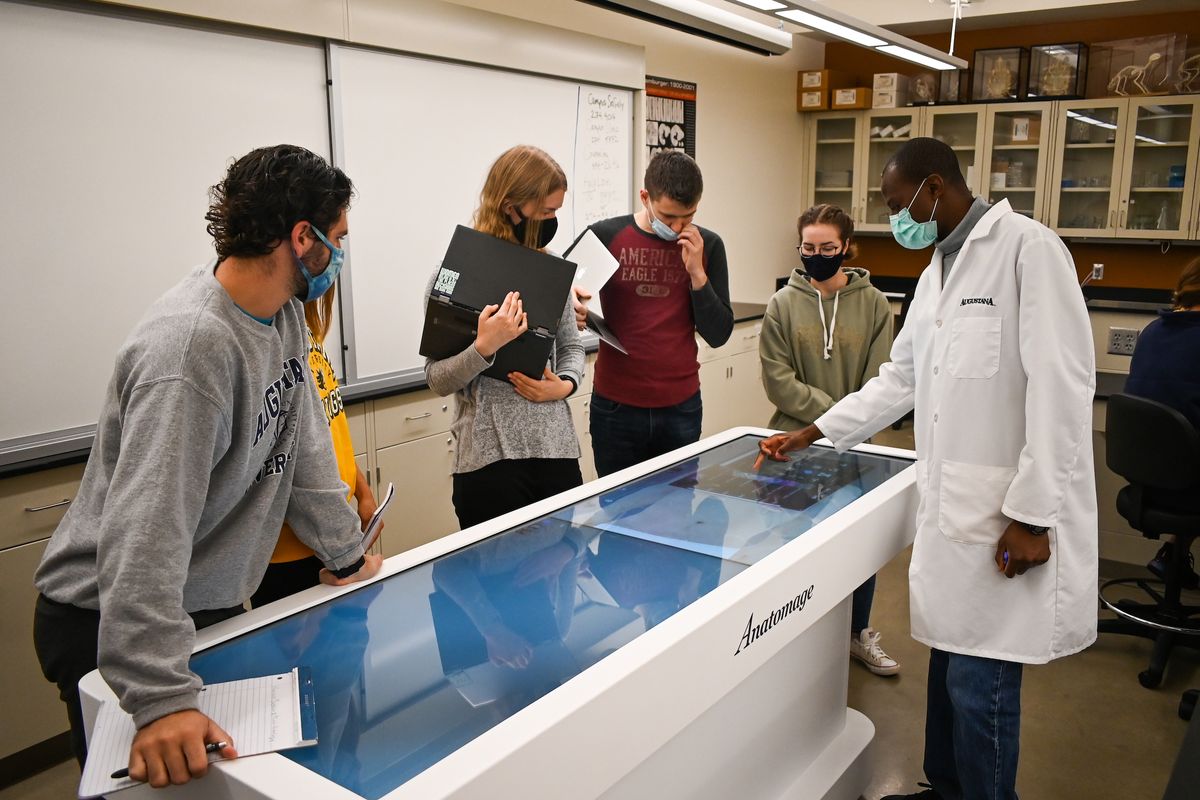Biology department integrates virtual cadaver table into classroom

Human cadavers can make learning human anatomy an odorous and expensive endeavor. Due to a new virtual version, however, Augustana students are able to learn from cadavers without the stench of formaldehyde and high cost of maintenance.
In July 2021, the Augustana Biology Department received one of these virtual cadavers, one of only two in the state of South Dakota.
According to professor Kevin Natukunda, this state-of-the-art piece of technology cost around $70,000 and was made possible with a grant from the Oliver Innovation Fund and a gift from two alumni, Greg and Karen Schultz.
The virtual cadaver is in the form of a roughly seven-foot long table with a computer touch screen surface, where images of four real human cadavers have been uploaded. According to Natukunda, the process of creating the images of the human cadavers takes about six months.
Two female and two male cadavers, each of whom died of different causes and consented for their bodies to be used for scientific purposes, were dissected as normal, but pictures were taken during the process to be incorporated into the virtual cadaver.
“The way [the cadavers] were obtained is they sliced very tiny, thin slices of about 0.2 milimeters, and then they took images of each of the slices.”
Natukunda said these thin slices allow students to observe the virtual cadaver in a greater level of detail than a real cadaver.
“I’ve worked with both human cadavers and the table,” Natukunda said. “I would say there are some features that you cannot see on a real cadaver, so this in some way has some advantages.”
According to Natukunda, maintenance for a real cadaver lab is much more complicated, as it requires a separate room to store the cadaver with freezers and heightened security measures. A nation-wide shortage of human cadavers also makes cadavers difficult to come by.
Natukunda said some students are more comfortable working with the virtual cadaver than a real one. The virtual option allows students who are not able to dissect a human cadaver because of religious beliefs to participate in an anatomy class as well.
The cadaver table also affords students a unique learning opportunity, as they have the luxury of undoing whatever mistakes they might have made while dissecting.
“Here, it is just a click, and you can undo what you have done and repeat the process,” Natukunda said. “So, it can be much easier to work with [the cadaver table].”
Senior nursing major Nicole Dellis, who first used the table during a meeting of the Augustana Kidney Disease Screening and Awareness Club, said she wished the table would have been available when she took anatomy.
“It gave you a good perspective of what the anatomy would look like on a life-size scale, and you could play around with it without making any mistakes,” Dellis said.
Students have already used the virtual cadaver in the classroom as well. The table has been used in human anatomy, neurophysiology and developmental biology classes.
In addition to the detailed images, the virtual cadaver is also interactive. Students can peel off one layer at a time, which allows them to focus on skeletal and muscular structures alone, or even see how blood moves through the body.
“It’s one thing to read something,” Dellis said. “Seeing it on a large scale is a different story.”



